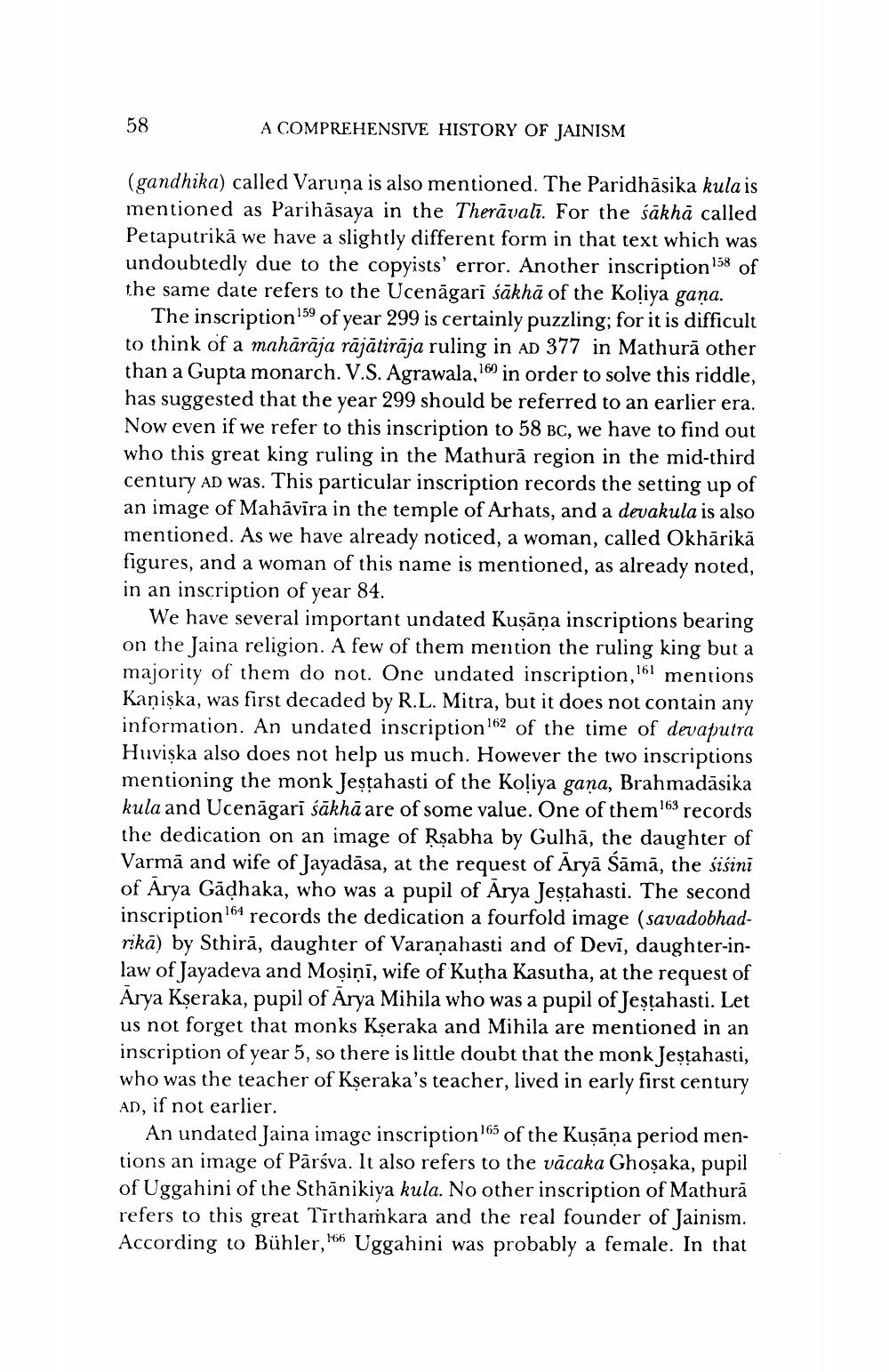________________
58
A COMPREHENSIVE HISTORY OF JAINISM
(gandhika) called Varuna is also mentioned. The Paridhäsika kula is mentioned as Parihāsaya in the Theravali. For the sakhā called Petaputrikā we have a slightly different form in that text which was undoubtedly due to the copyists' error. Another inscription 158 of the same date refers to the Ucenāgarī šākhā of the Koliya gaña.
The inscription159 of year 299 is certainly puzzling; for it is difficult to think of a mahārāja rājātirāja ruling in AD 377 in Mathurā other than a Gupta monarch. V.S. Agrawala, 16) in order to solve this riddle, has suggested that the year 299 should be referred to an earlier era. Now even if we refer to this inscription to 58 BC, we have to find out who this great king ruling in the Mathurā region in the mid-third century AD was. This particular inscription records the setting up of an image of Mahāvīra in the temple of Arhats, and a devakula is also mentioned. As we have already noticed, a woman, called Okhārikā figures, and a woman of this name is mentioned, as already noted, in an inscription of year 84.
We have several important undated Kuşāņa inscriptions bearing on the Jaina religion. A few of them mention the ruling king but a majority of them do not. One undated inscription,161 mentions Kaniska, was first decaded by R.L. Mitra, but it does not contain any information. An undated inscription 162 of the time of devaputra Huviska also does not help us much. However the two inscriptions mentioning the monk Jeştahasti of the Koliya gana, Brahmadāsika kula and Ucenāgarī sākhā are of some value. One of them63 records the dedication on an image of Rşabha by Gulhā, the daughter of Varmā and wife of Jayadāsa, at the request of Aryā Sāmā, the sišini of Arya Gādhaka, who was a pupil of Arya Jeșțahasti. The second inscription64 records the dedication a fourfold image (savadobhadrikā) by Sthirā, daughter of Varanahasti and of Devi, daughter-inlaw of Jayadeva and Moşiņi, wife of Kutha Kasutha, at the request of Arya Kșeraka, pupil of Arya Mihila who was a pupil of Jestahasti. Let us not forget that monks Kșeraka and Mihila are mentioned in an inscription of year 5, so there is little doubt that the monk Jestahasti, who was the teacher of Kșeraka's teacher, lived in early first century AD, if not earlier.
An undated Jaina image inscription 165 of the Kuşāņa period mentions an image of Pārsva. It also refers to the vācaka Ghosaka, pupil of Uggahini of the Sthānikiya kula. No other inscription of Mathurā refers to this great Tirthamnkara and the real founder of Jainism. According to Bühler, 16 Uggahini was probably a female. In that




